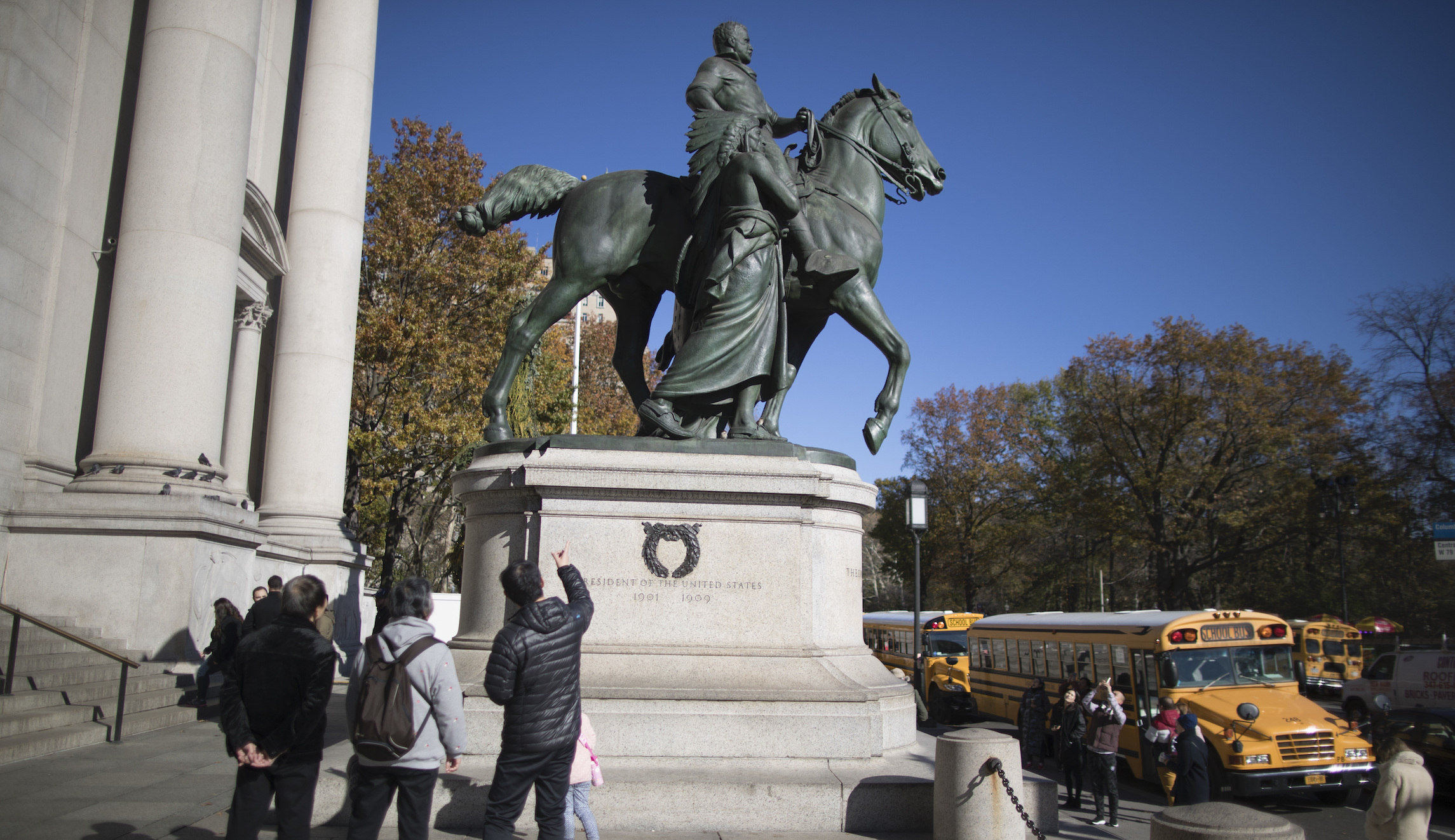A large statue of Theodore Roosevelt on horseback, with a Native American man and an African American man on either side of him, will be removed from the entrance of the American Museum of Natural History in New York.
The museum asked for its removal, and New York City, which owns the building and property, agreed after years of pressure from activists. The statue is coming down during a nationwide reckoning on race.
“Over the last few weeks, our museum community has been profoundly moved by the ever-widening movement for racial justice that has emerged after the killing of George Floyd,” the museum’s president, Ellen Futter, told the New York Times. “We have watched as the attention of the world and the country has increasingly turned to statues as powerful and hurtful symbols of systemic racism.”
Futter added that the decision to remove the statue was based on its “hierarchical composition” and not anything to do with Roosevelt, whom the museum honors.
New York City Mayor Bill de Blasio said it was “the right decision and the right time to remove this problematic statue.”

The statue of the former president was unveiled in 1940 and meant to celebrate Roosevelt “as a devoted naturalist and author of works on natural history.”
“At the same time, the statue itself communicates a racial hierarchy that the museum and members of the public have long found disturbing,” the museum’s website says. Theodore Roosevelt IV, 77, said the statue does not reflect the “legacy” of his great grandfather and voiced support for the move.
President Trump condemned the decision, tweeting late Sunday, “Ridiculous, don’t do it!”
Protesters have demanded the removal of statues across the country, particularly monuments that pay homage to historical figures associated with the Confederacy or the oppression of minorities. In some cases, demonstrators are taking it upon themselves to pull the monuments down.

